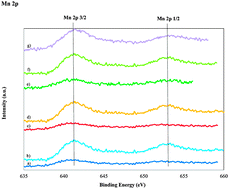Catalytic behavior of MnMCM-48 and WMnMCM-48 ordered mesoporous catalysts in a reductive environment: a study of the conversion of methylcyclopentane
Abstract
Direct

* Corresponding authors
a
Laboratoire des Matériaux, Surfaces et Procédés pour la Catalyse, UMR 7515 CNRS, Université de Strasbourg, 25 rue Becquerel, Strasbourg Cedex 2, France
E-mail:
ifechete@unistra.fr
Fax: +33 (0)368852761
Tel: +33 (0)368852737
b Institut de Physique et Chimie des Matériaux de Strasbourg, UMR 7504 CNRS, 23 rue du Loess BP 43, Strasbourg Cedex 2, France
c Department of Chemical Engineering/Engineering of Inorganic Products, Gh. Asachi University of Iasi, 73 D.Mangeron Bd., Iasi, Romania
Direct

 Please wait while we load your content...
Something went wrong. Try again?
Please wait while we load your content...
Something went wrong. Try again?
I. Fechete, O. Ersen, F. Garin, L. Lazar and A. Rach, Catal. Sci. Technol., 2013, 3, 444 DOI: 10.1039/C2CY20464A
To request permission to reproduce material from this article, please go to the Copyright Clearance Center request page.
If you are an author contributing to an RSC publication, you do not need to request permission provided correct acknowledgement is given.
If you are the author of this article, you do not need to request permission to reproduce figures and diagrams provided correct acknowledgement is given. If you want to reproduce the whole article in a third-party publication (excluding your thesis/dissertation for which permission is not required) please go to the Copyright Clearance Center request page.
Read more about how to correctly acknowledge RSC content.
 Fetching data from CrossRef.
Fetching data from CrossRef.
This may take some time to load.
Loading related content
